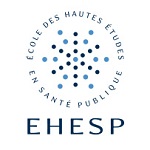Quantifying population preferences around vaccination against severe but rare diseases: A conjoint analysis among French university students, 2016
Abstract
BACKGROUND: Several concepts are available to explain vaccine decision making by individual and inter-individual factors, including risk perception, social conformism and altruism. However, only a few studies have quantified the weight of these determinants in vaccine acceptance. Using a conjoint analysis tool, we aimed at eliciting preferences in a student population regarding vaccination against a rare, severe and rapidly evolving hypothetical disease, similar to meningococcal serogroup C meningitis or measles.
METHODS: During March-May 2016, we conducted an emailing survey among university students aged 18-24years (N=775) in Rennes, France. Participants were asked to decide for or against immediate vaccination in 24 hypothetical scenarios, containing various levels of four attributes: epidemic situation, adverse events, information on vaccination coverage, and potential for indirect protection. Data were analysed using random effect estimator logit models.
RESULTS: Participants accepted on average 52% of scenarios and all attributes significantly impacted vaccination acceptance. The highest positive effects were seen with an epidemic situation (OR 3.81, 95%-CI 3.46-4.19), 90% coverage in the community (3.64, 3.15-4.20) and potential for disease elimination from the community (2.87, 2.53-3.26). Information on "insufficient coverage" was dissuasive (vs. none of friends vaccinated: 0.65, 0.56-0.75). Controversy had a significantly greater negative effect than a confirmed risk of severe adverse events (OR 0.05 vs. 0.22). In models including participant characteristics, preference weights were unchanged, while trust in health authorities and vaccination perceptions strongly influenced acceptance themselves. The greatest significant variation of preference weights between subgroups was observed with controversy among students using alternative medicine daily (OR 0.28) and among students relying on scientific vaccine information (OR 0.02).
CONCLUSIONS: Among young adults, potential for indirect protection and factual information on coverage in the community and potential side effects positively impact theoretical vaccine acceptance. Conjoint analyses should be conducted to understand vaccine hesitancy in specific vaccination programs.
